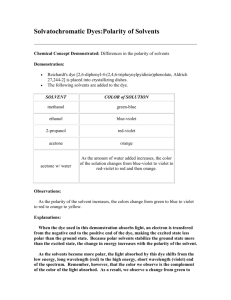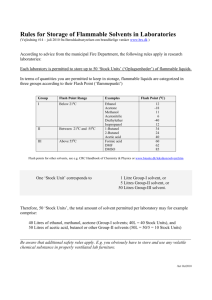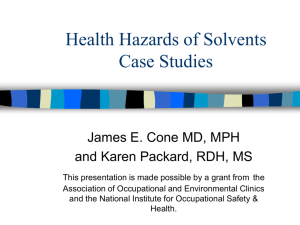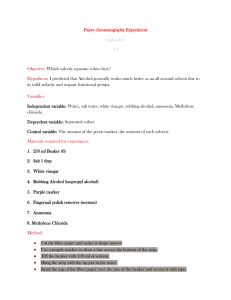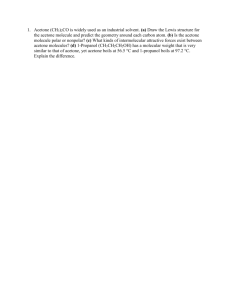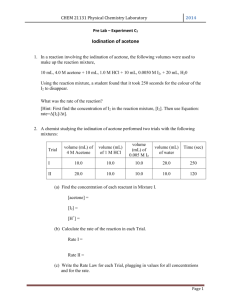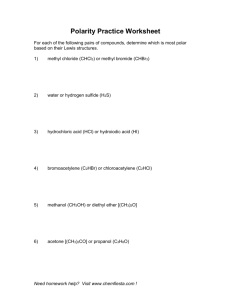Experimental Determination of the Impact of Different Solvents on
advertisement
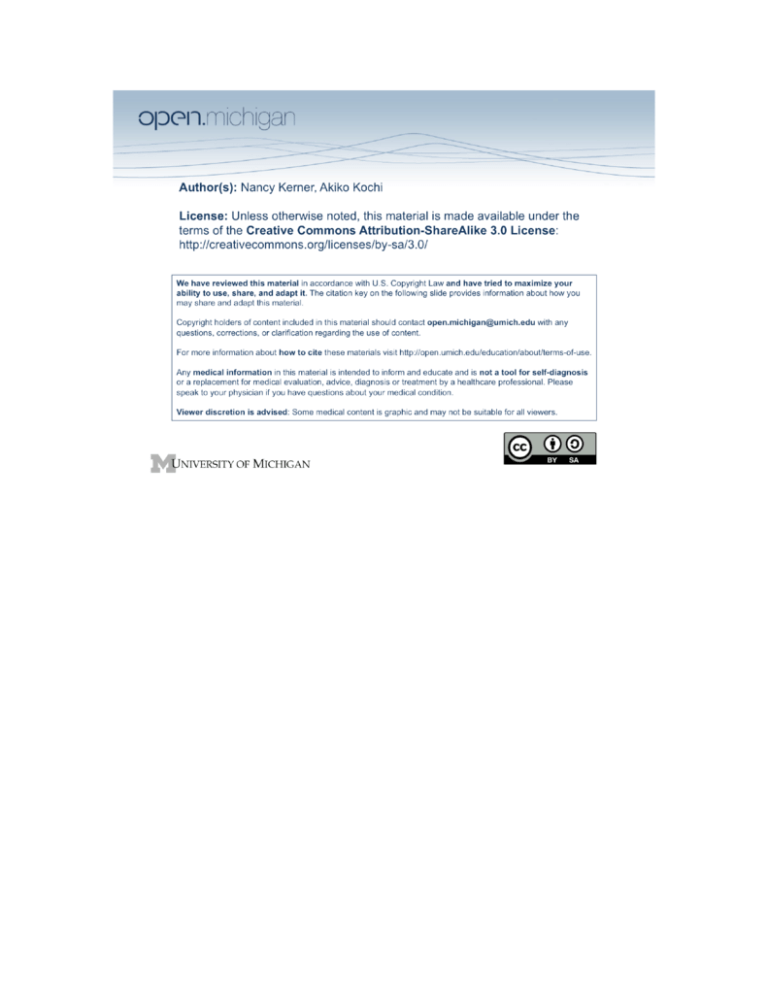
Experimental Determination of the Impact of Different Solvents on Precipitation Compare the impact of water and solvents other than water on water purity and precipitation • Here you will be experimenting with different solvents (different polarties) and observe the effect of solvent polarity has on salt dissolving and precipitation formation. [http://www.youtube.com/watch?v=Q_pngJu2igE&feature=player_embedded] Hypothesize what would happen if you add acetone to saturated CuSO4(aq) [http://www.youtube.com/watch?v=_nBeHnGiVuk&feature=player_embedded] Let's look at what happens when acetone is added to the saturated Copper(II) sulfate. [http://www.youtube.com/watch?v=IFE0fyfm71Q&feature=player_embedded] • • • • The less polar solvent, acetone, is added to the most polar solvent, water (copper (II) sulfate solution). Acetone will mix with the water due to the fact that acetone is moderately charged (so there will not be two separate layers of solution). As the acetone is mixed with the copper(II) sulfate, it decreases the polarity of the overall solution. The salt (copper(II) sulfate) solubility decreases, causing the blue salt to precipitate out. Remember: • • • • Water is the most polar solvent; when salt is dissolved in water, the ions are separated and protected by the water shell. Other moderately polar solvents, such as acetone, will mix with the water and decrease the polarity. Non-polar solvents, such as hexanes, will not mix with water and two distinct layers will be observed. Salt solubility (how much you can dissolve) will change as the solvent or its polarity is changed. Now that you have the basics, you are ready to fully understand what is going on in experiment 1 in lab!!
